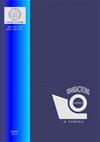空调过程的火用分析
IF 1.4
4区 工程技术
Q3 ENGINEERING, MECHANICAL
引用次数: 0
摘要
本文对一个冬季空调过程进行了火用分析。该过程包括将室外空气与调节空气混合、加热、加湿和重新加热空气混合物。空气在热交换器中被温度为80/60的温水加热并通过在12℃的温度下喷水进行加湿C.室外空气和空调空气的质量流量之比是变化的,正是基于这个变量进行火用分析。对不同室外空气温度值的五种情况进行了分析。结果表明,当室外空气和调节空气的质量流量之比g1=0.45时,热交换器中的传热率最小。换热器的火用破坏最大,整个过程的火用效率最大在比率g1=0.45时实现了ex=0.71。根据火用准则,这种空调是一种相对有效的过程。本文章由计算机程序翻译,如有差异,请以英文原文为准。
Exergy Analysis of an Air Conditioning Process
The exergy analysis of an air conditioning process in wintertime is presented in this paper. This process consists of mixing outdoor air with conditioned air, heating, humidifying, and reheating the air mixture. The air is heated in the heat exchangers by warm water at a temperature of 80/60C and humidified by spraying water at a temperature of 12 C. The ratio of the mass flow rates of outdoor and conditioned air is varied, and it is upon this variable that the exergy analysis is performed. The five cases are analyzed with different outdoor air temperature values. It is shown that the heat transfer rate in the heat exchangers is the smallest at the ratio of mass flow rates of outdoor and conditioned air g1 = 0.45. The greatest exergy destruction is apparent in the heat exchangers, and the maximum exergy efficiency of the whole process ex = 0.71 is achieved at the ratio g1 = 0.45. According to the exergy criterion, this air conditioning is a relatively efficient process.
求助全文
通过发布文献求助,成功后即可免费获取论文全文。
去求助
来源期刊

Transactions of FAMENA
工程技术-材料科学:综合
CiteScore
2.20
自引率
30.80%
发文量
15
审稿时长
>12 weeks
期刊介绍:
The journal publishes research and professional papers in the following fields:
Aerospace Engineering;
Automotive Engineering;
Biomechanics;
Energetics;
Engineering Design;
Experimental Methods;
Industrial Engineering;
Machine Tools and Machining;
Materials Science;
Mathematical Modelling and Simulation;
Mechanical Design;
Mechanics & Fluid Mechanics;
Nanotechnology;
Naval Architecture;
Numerical Methods;
Process Planning;
Quality Assurance;
Robotics & Mechatronics;
Thermodynamics.
 求助内容:
求助内容: 应助结果提醒方式:
应助结果提醒方式:


